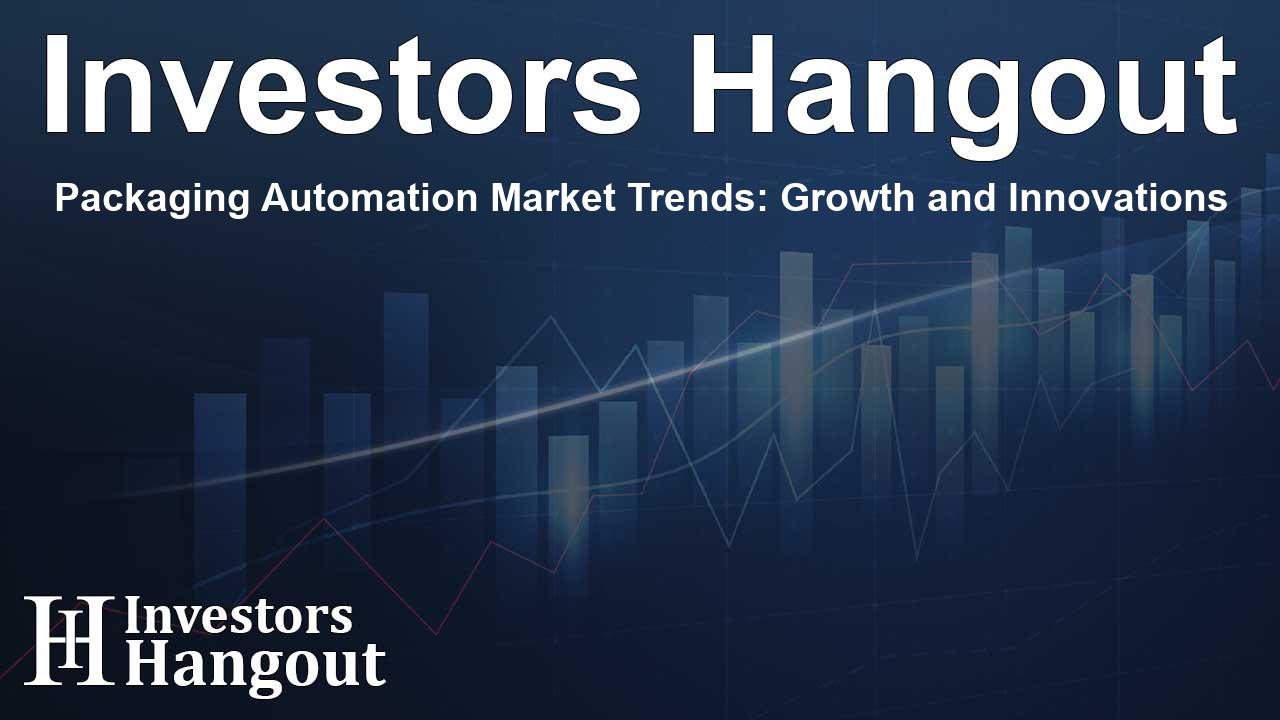Packaging Automation Market Trends: Growth and Innovations

Exploring the Packaging Automation Market
The Packaging Automation Market is experiencing remarkable growth, projected to soar to USD 145.8 billion by 2033, with a compound annual growth rate (CAGR) of 7.4%. This upward trajectory is fueled by increasing demands for efficiency and sustainability in various sectors including food and beverage, healthcare, and logistics. The advancements in technology, such as automated packaging systems and smart packaging solutions, are pivotal in propelling this market forward.
Current Trends Shaping the Market
As e-commerce continues to expand, the need for quick and efficient packaging processes is more apparent than ever. Businesses in the consumer goods sector are demanding innovative solutions to meet their operations’ high-speed requirements, encouraging packaging firms to embrace automation. Additionally, the focus on eco-friendly packaging solutions is driving the market, with manufacturers developing new materials and technologies that minimize environmental impact.
Automation Technologies Lead the Charge
Automated packaging technologies, including robots that facilitate packaging processes, are redefining the landscape. These innovations not only enhance production capacity but also reduce errors associated with manual packaging. The rise in robotic solutions, including vision systems for quality control, is crucial to increasing efficiency in industries dependent on precision.
Regional Insights: Dominance of Asia-Pacific
North America and Asia-Pacific are currently at the forefront of the packaging automation market, but Asia-Pacific is anticipated to maintain its leading position due to rapid industrialization and the increasing adoption of automation technologies. Countries like China and India are aggressively investing in automation, enabling businesses to streamline operations while reducing costs.
The U.S. Market Outlook
In the U.S., the packaging automation market is expected to grow from USD 22.0 billion in 2024 to USD 40.3 billion by 2033. This substantial growth is attributed to the automation trend across various sectors, notably food and pharmaceuticals, where efficiency and accuracy are vital. Key players like Rockwell Automation and ABB Ltd. are driving innovation through significant investments in automation solutions.
Competitive Landscape and Key Players
The packaging automation market is characterized by a competitive environment, with leading companies such as Mitsubishi Electric Corp., Rockwell Automation, and ABB Ltd. spearheading advancements. The competition is becoming fiercer as businesses strive to enhance their offerings with more sustainable and cost-effective packaging solutions. In addition to established leaders, new entrants are leveraging technology to create innovative solutions that respond to market needs.
Emerging Technologies and Trends
Recent developments indicate a shift toward integrating artificial intelligence with robotic packaging solutions. AI-powered robots are capable of adjusting to variations in product dimensions, enhancing efficiency and precision across various labeling and filling applications. Furthermore, smart packaging technologies utilizing IoT sensors are becoming increasingly common, allowing companies to monitor packaging conditions in real-time, thus ensuring product integrity.
Growth Drivers and Challenges
While the growth opportunities are plentiful, challenges also exist. High initial costs of implementing advanced automated systems may deter small and medium enterprises from adopting these technologies. Additionally, strict regulations in industries such as food and pharmaceuticals can complicate the integration of automation, leading to concerns regarding compliance and costs.
Looking to the Future
As we move forward, the demand for sustainable packaging solutions will likely shape development in the packaging automation market. With global awareness rising around environmental issues, firms must innovate to create eco-friendly packaging options. Moreover, the expansion of e-commerce and increased expectations for faster deliveries present immense opportunities for companies within the packaging sector.
Frequently Asked Questions
What is the projected growth rate of the packaging automation market?
The packaging automation market is expected to grow at a CAGR of 7.4% from now until 2033.
Why is Asia-Pacific leading the packaging automation market?
Asia-Pacific is leading due to rapid industrialization and an increasing focus on adopting advanced automation technologies.
What are some recent trends impacting the packaging automation sector?
Trends include the integration of robotics and AI, as well as the growth of smart packaging solutions that enhance tracking and product safety.
Who are the key players in the packaging automation market?
Key players include Rockwell Automation, Mitsubishi Electric Corp., ABB Ltd., and ULMA Packaging, among others.
What challenges does the market face regarding automation integration?
Challenges include high costs of implementation and complex regulatory requirements within certain industries.
About The Author
Contact Caleb Price privately here. Or send an email with ATTN: Caleb Price as the subject to contact@investorshangout.com.
About Investors Hangout
Investors Hangout is a leading online stock forum for financial discussion and learning, offering a wide range of free tools and resources. It draws in traders of all levels, who exchange market knowledge, investigate trading tactics, and keep an eye on industry developments in real time. Featuring financial articles, stock message boards, quotes, charts, company profiles, and live news updates. Through cooperative learning and a wealth of informational resources, it helps users from novices creating their first portfolios to experts honing their techniques. Join Investors Hangout today: https://investorshangout.com/
The content of this article is based on factual, publicly available information and does not represent legal, financial, or investment advice. Investors Hangout does not offer financial advice, and the author is not a licensed financial advisor. Consult a qualified advisor before making any financial or investment decisions based on this article. This article should not be considered advice to purchase, sell, or hold any securities or other investments. If any of the material provided here is inaccurate, please contact us for corrections.
